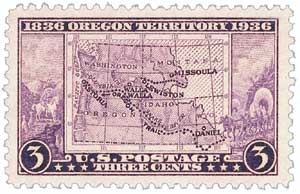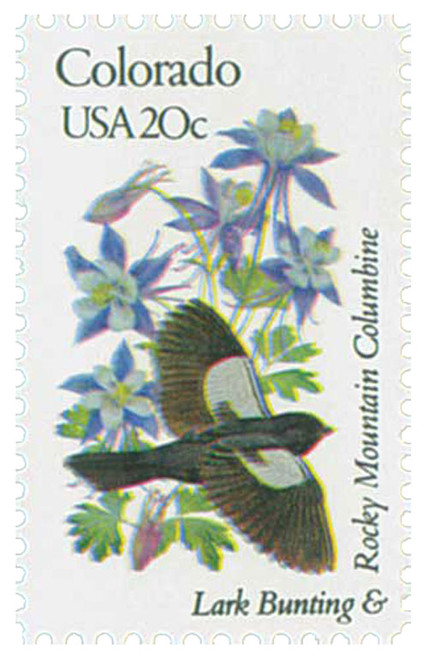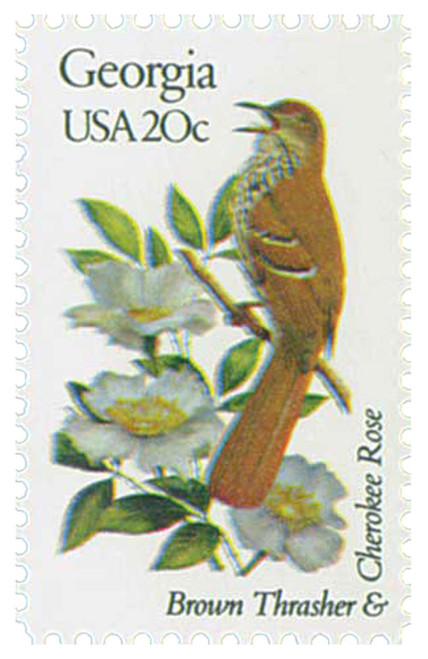
# 1989 FDC - 1982 20c State Birds and Flowers: Oregon
20¢ Oregon
State Birds and Flowers
City: Washington, DC and state capitals
Quantity: 13,339,000 panes
Printed By: Bureau of Engraving and Printing
Printing Method: Photogravure
Perforations: 10.5 x 11.25
Color: Multicolored
Oregon Joins The Union
There was a large population of American Indians living in Oregon when the first Europeans arrived. These tribes included the Chinook, Clackama, Kalapuya, Multnomah, Tillamook, Bannock, Cayuse, Paiute, Umatilla (a major band of the Nez Perce), Klamath, and Rogue.
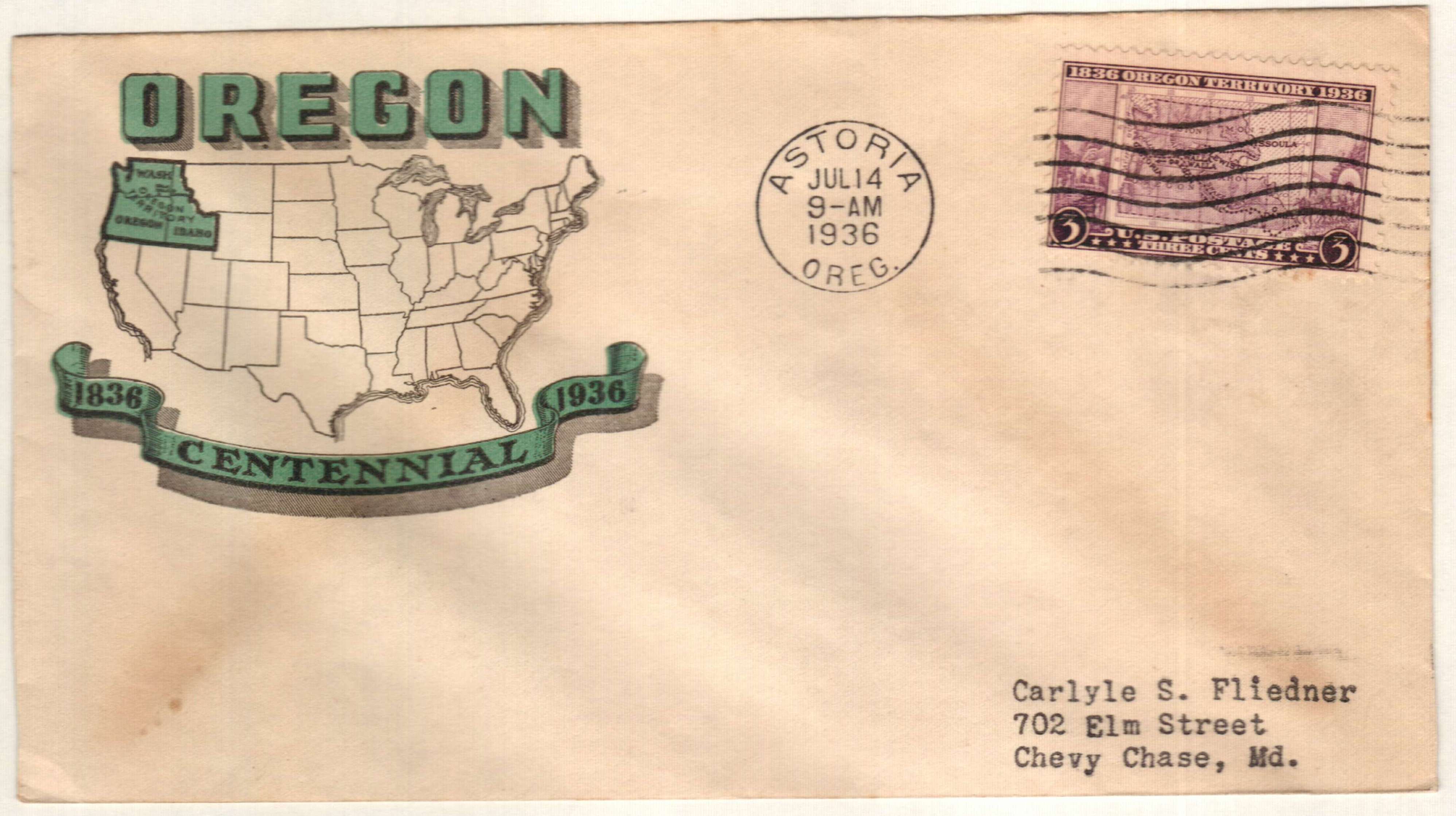
Spanish sailors traveling from the Philippines to Mexico were probably the first whites to spot the coast of Oregon. In 1579, Sir Francis Drake may have reached Oregon’s southern coast while searching for a water route from the Pacific Ocean to the Atlantic Ocean. British explorer James Cook sailed into Yaquina Bay in 1778. American ships reached the Oregon coast in 1788. In 1792, Captain Robert Gray, an American, was the first European to explore the Columbia River. Gray named the river after his ship. The Lewis and Clark Expedition traveled by land to the mouth of the Columbia River in 1805. These explorations gave the United States solid grounds for claiming the Oregon region.
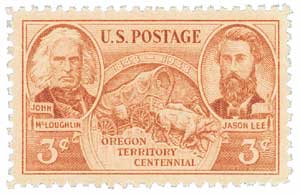
In the early 1800s, the Oregon region was defined as stretching from Alaska, which was controlled by Russia, to California, which was ruled by Spain. Oregon’s eastern boundary extended all the way to the Rocky Mountains. Russia, Spain, Great Britain, and the United States all made claims on this area.
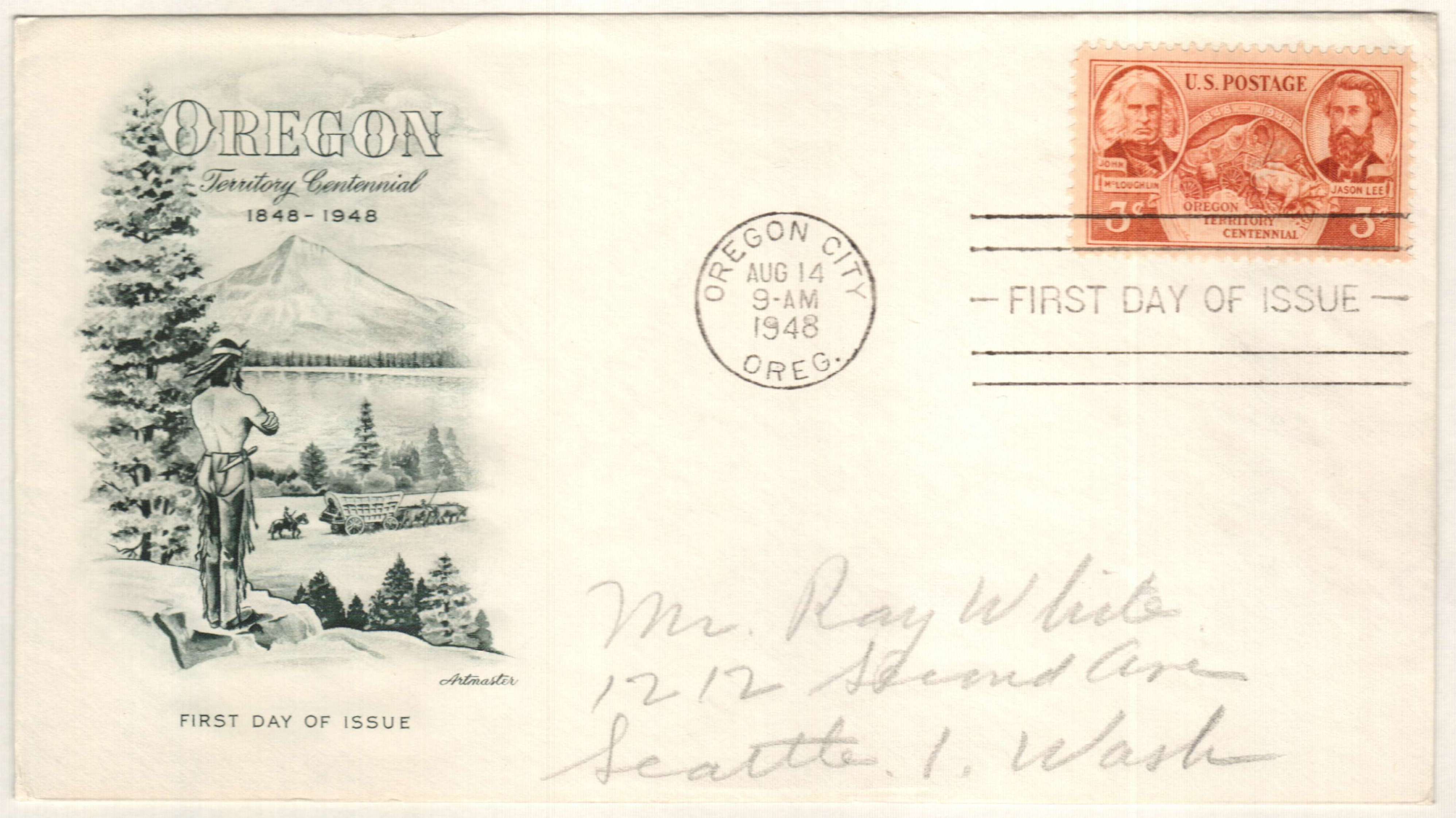
In 1819, Spain signed a treaty giving up its claim to territory north of latitude 42º, which is modern Oregon’s southern boundary. Russia signed treaties with Great Britain and the US, relinquishing its claims south of 54º 40’. However, the US and Britain could not agree on a boundary and signed an agreement by which citizens of both nations could settle in Oregon.
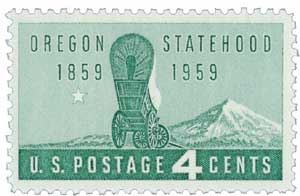
American fur trader John Jacob Astor began white settlement of Oregon when he established a fur trading company at Astoria. After the War of 1812, Great Britain took control of Astoria. In 1825, the British Hudson Bay Company established Fort Vancouver at the site of today’s Vancouver, Washington. John McLoughlin served as head of the firm for 20 years – which basically meant he ruled the region. McLoughlin later became a US citizen. He played a key role in the settlement of the state and is today remembered as the “father of Oregon.”
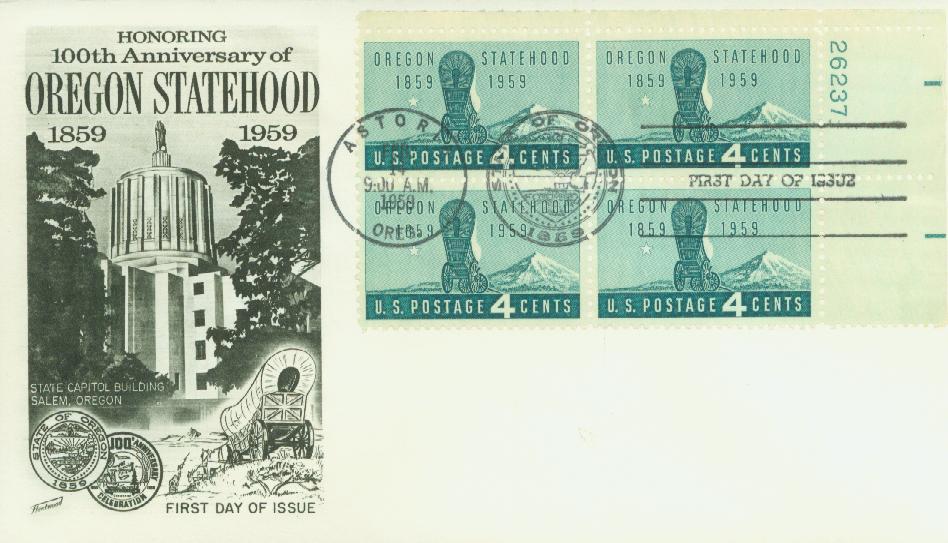
Methodist missionaries at Willamette Valley created the first permanent American settlement in Oregon in 1834. After this settlement was established, hundreds of Americans began pouring into the area every year. This put pressure on the US and Britain to settle their boundary dispute. In 1844, James K. Polk ran for the US presidency, based on a campaign stating that land south of 54º 40’ belonged to the US. The slogan “Fifty-Four Forty or Fight” became a big part of his campaign. Polk was elected President, and in 1846, he signed a treaty with Great Britain fixing the 49th parallel as the main dividing line between the territories of the two nations.
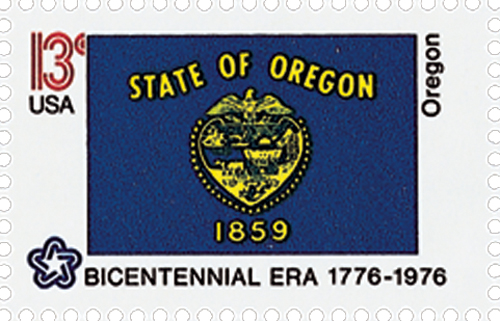
During the second half of the 19th century, there were a series of bitter wars fought between American Indian tribes and whites. In 1847, Indians massacred Marcus Whitman and 13 others near today’s Walla Walla, Washington. This sparked the Cayuse War (1847-48). Gold was discovered in southwest Oregon in the early 1850s, and white miners flocked to the area. A series of conflicts between miners and Indians led to the Rogue River Indian War, which ended in 1856. The Indians were forced into a reservation. The Modoc Indian War lasted from November 1872 to June 1873. A small group of Modoc Indians used lava beds, which had formed a natural fortress, to hold more than 1,000 US soldiers back before surrendering. In 1877, the Nez Perce resisted being moved to a reservation. The famous Chief Joseph, who attempted to flee from US soldiers through Idaho and Montana, led One Nez Perce group. Chief Joseph was forced to surrender near the Canadian border. In 1878, the Paiute and Bannock Indians began attacking settlers, but they were quickly defeated.

Oregon settlers organized a provisional government in 1843. They adopted a set of laws patterned after those of Iowa. In 1848, Oregon became a territory. Oregon City served as the capital until 1850, when it was moved to Salem. In 1853, the Washington Territory was created, and Oregon received the same boundaries it has today.
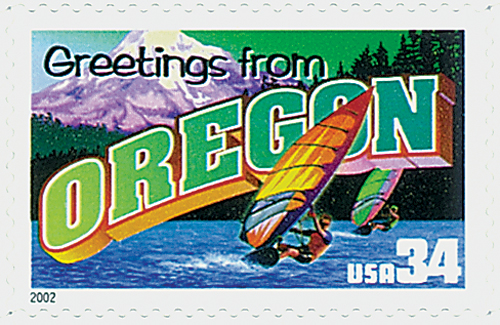
The territory grew fast after the attractive Donation Land Law of 1850 was passed. This law gave 320 acres of land to any US citizen over 18. A settler’s wife could also receive 320 acres. The settler had to cultivate the land for a minimum of four years to qualify for ownership. Starting December 1850, and until December 1855, settlers received 160 acres of land and had to be over 21 years old.
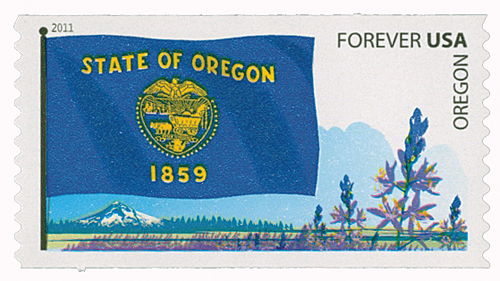
Oregon achieved statehood on February 14, 1859. Salem served as the capital city and John Whiteaker became the first governor. During the Civil War, Indian attacks intensified in the American West, as the Union Army was busy fighting the Confederacy. State volunteers protected Oregon from such attacks, which lasted for more than 15 years after the conclusion of the war. When the war ended, many soldiers moved west, looking for new opportunities. This movement was fostered by the completion of the transcontinental railroads in the 1880s. Oregon grew rapidly. In 1860, its population was about 52,000. By 1890, its population reached 300,000.
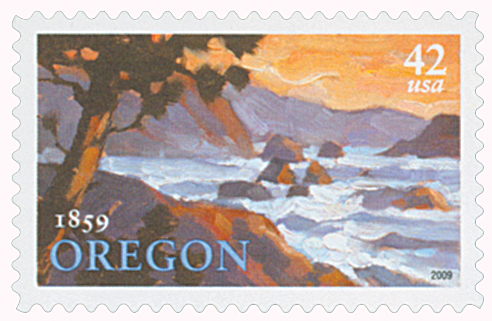
Oregon instituted laws that allow voters to participate directly in government during the early 1900s. The initiative and referendum laws allow voters to be involved in the lawmaking process. Recall laws allow voters to remove officials from office if they are deemed unsatisfactory. Such direct government procedures became known as the Oregon system.

During the Great Depression, the government built Bonneville Dam on the Columbia River. This and other dams made the river navigable and are excellent sources of power. Portland developed as an important shipyard during World War II. Improvements in the timber industry, such as using sawdust and bark to make products, helped make logging more profitable.
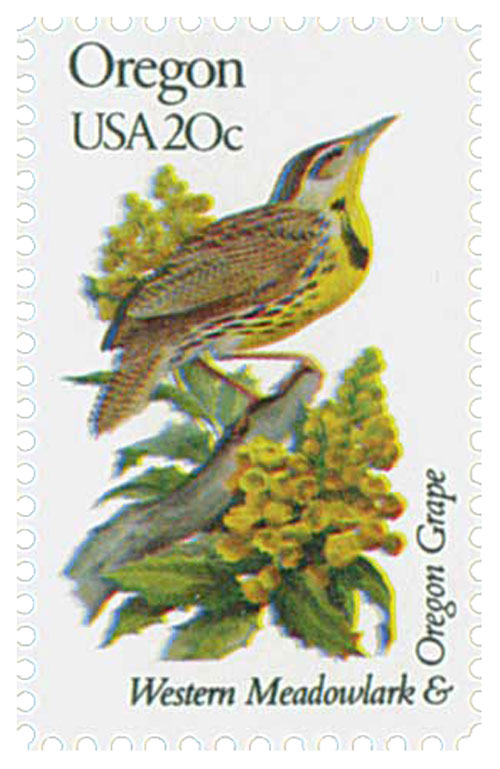
During the early 1980s, Oregon experienced its worst economic depression since the Great Depression, as a national slump in housing and construction hurt the logging industry. By the mid-1980s, the state started to recover. Since that time, Oregon’s economy became more diversified as the electronics, service, and agricultural industries expanded to round out the state’s income.
20¢ Oregon
State Birds and Flowers
City: Washington, DC and state capitals
Quantity: 13,339,000 panes
Printed By: Bureau of Engraving and Printing
Printing Method: Photogravure
Perforations: 10.5 x 11.25
Color: Multicolored
Oregon Joins The Union
There was a large population of American Indians living in Oregon when the first Europeans arrived. These tribes included the Chinook, Clackama, Kalapuya, Multnomah, Tillamook, Bannock, Cayuse, Paiute, Umatilla (a major band of the Nez Perce), Klamath, and Rogue.

Spanish sailors traveling from the Philippines to Mexico were probably the first whites to spot the coast of Oregon. In 1579, Sir Francis Drake may have reached Oregon’s southern coast while searching for a water route from the Pacific Ocean to the Atlantic Ocean. British explorer James Cook sailed into Yaquina Bay in 1778. American ships reached the Oregon coast in 1788. In 1792, Captain Robert Gray, an American, was the first European to explore the Columbia River. Gray named the river after his ship. The Lewis and Clark Expedition traveled by land to the mouth of the Columbia River in 1805. These explorations gave the United States solid grounds for claiming the Oregon region.

In the early 1800s, the Oregon region was defined as stretching from Alaska, which was controlled by Russia, to California, which was ruled by Spain. Oregon’s eastern boundary extended all the way to the Rocky Mountains. Russia, Spain, Great Britain, and the United States all made claims on this area.

In 1819, Spain signed a treaty giving up its claim to territory north of latitude 42º, which is modern Oregon’s southern boundary. Russia signed treaties with Great Britain and the US, relinquishing its claims south of 54º 40’. However, the US and Britain could not agree on a boundary and signed an agreement by which citizens of both nations could settle in Oregon.

American fur trader John Jacob Astor began white settlement of Oregon when he established a fur trading company at Astoria. After the War of 1812, Great Britain took control of Astoria. In 1825, the British Hudson Bay Company established Fort Vancouver at the site of today’s Vancouver, Washington. John McLoughlin served as head of the firm for 20 years – which basically meant he ruled the region. McLoughlin later became a US citizen. He played a key role in the settlement of the state and is today remembered as the “father of Oregon.”

Methodist missionaries at Willamette Valley created the first permanent American settlement in Oregon in 1834. After this settlement was established, hundreds of Americans began pouring into the area every year. This put pressure on the US and Britain to settle their boundary dispute. In 1844, James K. Polk ran for the US presidency, based on a campaign stating that land south of 54º 40’ belonged to the US. The slogan “Fifty-Four Forty or Fight” became a big part of his campaign. Polk was elected President, and in 1846, he signed a treaty with Great Britain fixing the 49th parallel as the main dividing line between the territories of the two nations.

During the second half of the 19th century, there were a series of bitter wars fought between American Indian tribes and whites. In 1847, Indians massacred Marcus Whitman and 13 others near today’s Walla Walla, Washington. This sparked the Cayuse War (1847-48). Gold was discovered in southwest Oregon in the early 1850s, and white miners flocked to the area. A series of conflicts between miners and Indians led to the Rogue River Indian War, which ended in 1856. The Indians were forced into a reservation. The Modoc Indian War lasted from November 1872 to June 1873. A small group of Modoc Indians used lava beds, which had formed a natural fortress, to hold more than 1,000 US soldiers back before surrendering. In 1877, the Nez Perce resisted being moved to a reservation. The famous Chief Joseph, who attempted to flee from US soldiers through Idaho and Montana, led One Nez Perce group. Chief Joseph was forced to surrender near the Canadian border. In 1878, the Paiute and Bannock Indians began attacking settlers, but they were quickly defeated.

Oregon settlers organized a provisional government in 1843. They adopted a set of laws patterned after those of Iowa. In 1848, Oregon became a territory. Oregon City served as the capital until 1850, when it was moved to Salem. In 1853, the Washington Territory was created, and Oregon received the same boundaries it has today.

The territory grew fast after the attractive Donation Land Law of 1850 was passed. This law gave 320 acres of land to any US citizen over 18. A settler’s wife could also receive 320 acres. The settler had to cultivate the land for a minimum of four years to qualify for ownership. Starting December 1850, and until December 1855, settlers received 160 acres of land and had to be over 21 years old.

Oregon achieved statehood on February 14, 1859. Salem served as the capital city and John Whiteaker became the first governor. During the Civil War, Indian attacks intensified in the American West, as the Union Army was busy fighting the Confederacy. State volunteers protected Oregon from such attacks, which lasted for more than 15 years after the conclusion of the war. When the war ended, many soldiers moved west, looking for new opportunities. This movement was fostered by the completion of the transcontinental railroads in the 1880s. Oregon grew rapidly. In 1860, its population was about 52,000. By 1890, its population reached 300,000.

Oregon instituted laws that allow voters to participate directly in government during the early 1900s. The initiative and referendum laws allow voters to be involved in the lawmaking process. Recall laws allow voters to remove officials from office if they are deemed unsatisfactory. Such direct government procedures became known as the Oregon system.

During the Great Depression, the government built Bonneville Dam on the Columbia River. This and other dams made the river navigable and are excellent sources of power. Portland developed as an important shipyard during World War II. Improvements in the timber industry, such as using sawdust and bark to make products, helped make logging more profitable.

During the early 1980s, Oregon experienced its worst economic depression since the Great Depression, as a national slump in housing and construction hurt the logging industry. By the mid-1980s, the state started to recover. Since that time, Oregon’s economy became more diversified as the electronics, service, and agricultural industries expanded to round out the state’s income.






